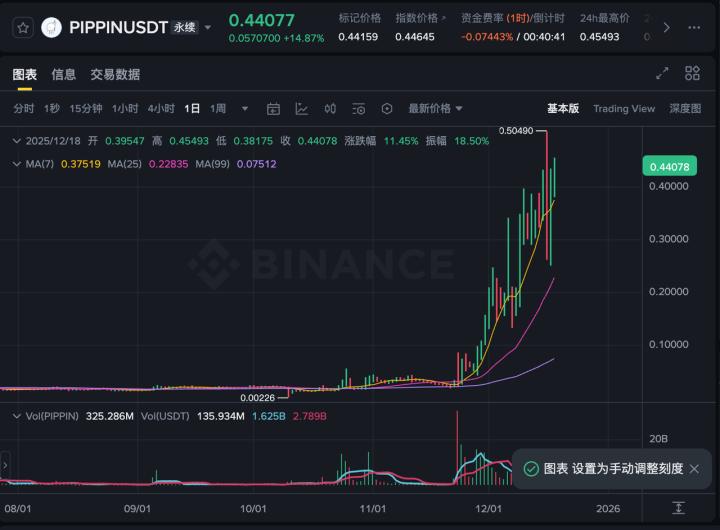Author: Three Sigma
Compiled by: Felix, PANews
In the ever-evolving blockchain landscape, instant transactions are becoming a necessity, not a luxury. As decentralized finance applications, payments, gaming, and high-frequency trading push the limits of traditional blockchain capabilities, the demand for real-time performance has never been greater. In the race to redefine transaction speed and scalability, there are MegaETH, Monad, and Hyperliquid.
As mentioned in previous articles, MegaETH is an emerging L2 solution focused on prioritizing real-time performance, promising near-instant block times and high transaction throughput, which has garnered market attention.
However, Hyperliquid and Monad, with their unique approaches to optimizing blockchain performance, are making this competition even more intense. This article will delve into the advantages, architectures, and trade-offs of these solutions to clarify who might lead the race for instant blockchain transactions.
MegaETH
MegaETH is an L2 scaling solution designed specifically for Ethereum. The unique aspect of MegaETH is its focus on real-time blockchain performance, providing ultra-low latency and scalability for applications that require instant responsiveness.
Key Points
- Latency and Speed: MegaETH block times range from 1 to 10 milliseconds, processing 100,000 transactions per second (TPS).
- Dedicated Nodes: MegaETH uses a sequencer-centric model, assigning dedicated roles to nodes (sequencers, validators, and full nodes) to simplify execution and reduce redundancy.
- Integration with EigenDA: MegaETH leverages EigenDA to achieve data availability, allowing it to scale without compromising reliability or performance.
Advantages
MegaETH's architecture is designed for speed and efficiency, making it stand out in the competitive L2 landscape:
- Low Latency: Its near-instant transaction processing makes it an ideal choice for high-frequency trading, gaming, and payment systems.
- Scalability: By processing blocks in a matter of milliseconds, MegaETH avoids the congestion issues that often plague other L2s during peak demand periods.
- EVM Compatibility: Fully compatible with the Ethereum ecosystem, enabling seamless integration with existing dApps while maintaining security.
Hyperliquid
While MegaETH focuses on real-time performance, it faces fierce competition from Hyperliquid and Monad, which take different approaches to optimizing blockchain transactions.
Hyperliquid is a fully on-chain perpetual trading protocol, built on its own L1 blockchain, optimized for low latency and high throughput. By integrating spot, derivatives, and pre-launch markets on its platform, Hyperliquid introduces the high-performance HyperBFT consensus and HyperEVM, aiming to scale its ecosystem through efficient liquidity aggregation.
- Vision: Hyperliquid is focused on redefining the trading experience by providing high-speed, decentralized market infrastructure, appealing to financial institutions and high-volume traders.
- Market Specialization: Its unique combination of spot and perpetual markets enables seamless liquidity aggregation and rapid settlement.
Hyperliquid's stack contains a broader set of financial primitives, such as lending, governance, and native stablecoins. Built on its HyperBFT consensus, Hyperliquid achieves 0.2-second block times while maintaining a unified state across all components, ensuring performance, liquidity, and programmability. With over 262,000 users and processing 200,000 TPS, Hyperliquid positions itself as a leader in decentralized market infrastructure.
To further expand its reach, Hyperliquid offers Builder Codes, which allow other dApps and CEXes to seamlessly integrate its liquidity by paying a fee per transaction. Builder Codes not only expand Hyperliquid's coverage but also incentivize external platforms to leverage its high-performance trading infrastructure, enhancing liquidity and growing its network effects.
Monad
Monad has redesigned the EVM architecture to achieve high throughput through parallel execution. By addressing the limitations of Ethereum's sequential transaction processing, Monad unlocks new levels of efficiency and scalability.
- Vision: Monad aims to provide cutting-edge blockchain performance while retaining decentralization, setting a new standard for L1 scalability.
- Parallel Execution: Monad's architecture supports concurrent transaction processing across multiple EVM instances, ensuring seamless integration with existing user and developer workflows.
- Full Compatibility: Monad ensures bytecode EVM compatibility and Ethereum RPC compatibility, integrating the latest internal optimizations without changing the development experience.
Monad introduces pipelines to optimize transaction execution, consensus processes, and state synchronization, maximizing hardware efficiency and minimizing latency. Utilizing a custom MonadBFT consensus mechanism derived from HotStuff, the protocol supports a robust and decentralized validator set while achieving fast block finality.
Key innovations include MonadDB (a custom database tailored for Ethereum state access) and Optimistic parallel execution (ensuring high throughput with minimal overhead). Monad separates the consensus layer and execution layer, further enhancing scalability, enabling developers to build applications that require both exceptional performance and low latency.
Monad's groundbreaking advancements make it a powerful platform for enterprise-grade applications, providing developers with the tools to create high-throughput dApps while maintaining Ethereum compatibility and embracing the future of blockchain innovation.
Comparison
By evaluating the key metrics of MegaETH, Hyperliquid, and Monad, a comprehensive understanding of their unique strengths and trade-offs can be gained. This comparison focuses on latency, throughput (TPS), EVM compatibility, use cases, time-to-finality (TTF), and decentralization trade-offs. These attributes highlight the fundamental requirements for scaling blockchain infrastructure while ensuring practical utility and performance.

Latency:
- MegaETH excels in ultra-low latency (1-10 ms) L2 transactions, making it ideal for applications requiring near-instant responsiveness, such as high-frequency trading or competitive gaming.
- Hyperliquid's sub-second latency is optimized for financial markets, enabling rapid order execution and a seamless trading experience.
- Monad's parallel low-latency execution ensures stability even under high-load network conditions, supporting a variety of dApps.
Throughput (TPS):
- MegaETH's throughput exceeds 100,000 TPS, emphasizing scalability for large-scale applications.
- Hyperliquid leverages its proprietary HyperBFT consensus and L1 optimizations to achieve 200,000 TPS.
- Monad's maximum TPS is 10,000, focusing on balancing high performance and decentralization.
EVM Compatibility:
- MegaETH's full EVM compatibility ensures seamless onboarding for developers and existing dApps.
- Hyperliquid integrates HyperEVM, a customized version tailored for financial market use cases.
- Monad's redesigned EVM supports high-performance execution while maintaining compatibility with Ethereum tools and standards.
Use Cases:
- MegaETH targets gaming, trading, and payment systems, emphasizing real-time interaction and high scalability.
- Hyperliquid is focused on financial markets, providing infrastructure for derivatives, spot trading, and market making.
- Monad's versatility supports a wide range of dApps, particularly those requiring high throughput and low latency.
Time-to-Finality (TTF):
- MegaETH L2 transactions achieve near-instant finality (10 ms), but full settlement on Ethereum L1 takes approximately 7 days.
- Hyperliquid's 1-2 second TTF strikes a balance between low latency and consensus mechanism.
- Monad completes transactions within 1 second, providing a practical combination of speed and security.
Decentralization Trade-offs:
- The centralized ordering design of MegaETH sacrifices some decentralization to achieve L2 real-time performance
- Hyperliquid's market-centric architecture prioritizes low latency and high throughput over decentralization
- Monad's design seeks to strike a balance, utilizing parallel execution and delayed state updates to optimize performance and decentralization
Conclusion
MegaETH, Hyperliquid, and Monad each bring unique innovations to the blockchain ecosystem, catering to different needs:
- MegaETH: Excels in latency and TPS, making it an ideal choice for real-time applications, but its centralized ordering design raises concerns about decentralization
- Hyperliquid: Succeeds in financial markets with its HyperEVM and liquidity integration, but is less versatile than MegaETH for other dApp categories
- Monad: Strikes a balance between decentralization and performance, using parallel execution to boost TPS and support a variety of applications
Who leads? It depends on the use case:
- In trading and liquidity, Hyperliquid's focus on finance makes it a strong contender
- For general dApp scalability, MegaETH's real-time performance and broader application range put it in the lead
- For decentralized high-throughput applications, Monad's parallelized EVM provides a better choice for developers prioritizing decentralization
Key Observations:
- MegaETH's Tradeoffs: By sacrificing decentralization, MegaETH achieves unparalleled speed, making it highly attractive for real-time systems like transactions and gaming. While MegaETH relies on Ethereum L1 for settlement (ensuring trust and security), it inherits Ethereum's finality delays. In contrast, Monad and Hyperliquid achieve faster native finality through their independent consensus mechanisms, prioritizing immediate performance, but at the cost of Ethereum's shared security assurances.
- Hyperliquid's Specialization: Hyperliquid stands out in financial markets with its speed, liquidity aggregation, and seamless trading infrastructure. However, its focus on transactions limits the versatility of its broader dApp ecosystem, reducing its appeal for general applications. Additionally, its centralized HyperBFT consensus raises concerns about decentralization and trust, heavily relying on external liquidity to sustain its performance and ecosystem growth.
- Monad's Balance: Monad strikes a balance between scalability and decentralization through its parallel execution model, providing high throughput for developers without compromising EVM compatibility. However, its hardware dependencies (e.g., 32 GB RAM, high bandwidth) limit the accessibility for smaller operators, potentially leading to centralization. Its independent L1 consensus provides autonomy but sacrifices Ethereum's security assurances, which may deter developers prioritizing trust and shared security.
The competition between MegaETH, Hyperliquid, and Monad highlights a key aspect of blockchain evolution: there is currently no single solution that dominates all use cases. Each platform excels in its respective domain, offering unique value propositions to meet different needs. For developers and enterprises, the decision often boils down to the specific application requirements, be it speed, market liquidity, or scalable decentralization.
These projects also underscore the importance of continuous innovation in blockchain infrastructure. As adoption grows, the industry must reconcile the scalability trilemma with user expectations for low fees, high performance, and robust security. Collaborative progress, such as integrating solutions from different ecosystems, may drive the next wave of blockchain breakthroughs. As blockchain technology evolves, these platforms have pushed the boundaries of what's possible, paving the way for faster, scalable, and more efficient decentralized systems.
Ultimately, the choice depends on the priorities of developers and users: speed, decentralization, or specialization.
Related Reading: The Battle of High-Performance Blockchains: A Comparison of MegaETH and Monad and Their Future Prospects







